Conjugated Heat Transfer (CHT) with Viscous Heating, CFD Simulation with Ansys Fluent
$100.00 Student Discount
In this project, Conjugated Heat Transfer (CHT) with Viscous Heating has been simulated and the results of this simulation have been investigated.
Click on Add To Cart and obtain the Geometry file, Mesh file, and a Comprehensive ANSYS Fluent Training Video.To Order Your Project or benefit from a CFD consultation, contact our experts via email ([email protected]), online support tab, or WhatsApp at +44 7443 197273.
There are some Free Products to check our service quality.
If you want the training video in another language instead of English, ask it via [email protected] after you buy the product.
Description
CHT Introduction
conjugate heat transfer (CHT) analysis can precisely simulate heat transfer by simultaneously solving solid and flow field heat transfer processes. CHT in CFD allows for the heat transfer simulation between Solid and Fluid domains by exchanging thermal energy at the interfaces between them. For example, conduction in solid and free and forced convection in fluid and even radiation between them.
In the default state in Ansys Fluent, The viscous heating terms in the energy equation are ignored when the pressure-based solver is used, but They are always On for the density-based solver. Viscous dissipation term should be enabled when the shear stress in the fluid is significant, or the velocity of the fluid is high, and when there are compressible flows in the domain.
Viscous heating arises as a consequence of fluid deformation, which causes shear within it. Momentum is then diffused down the velocity gradient. In another view, viscous heating represents the effect of a process in which a fluid works on head-to-head layers due to shear forces and is converted into heat.
Conjugated Heat Transfer (CHT) with Viscous Heating Project Description
In this project, Conjugated Heat Transfer (CHT) with Viscous Heating in a solid domain consisting of 3 channels inside, flowing into the domain on one side and leaving it on another side, is investigated. The channels with a square cross-section are located at an equivalent distance, while the central channel is in the body’s center. There is a high-velocity flow, and very small cross-section area channels are set in the domain in order to intensify viscous heating and see it clearly in results.
Energy is transferred from the channels’ boundaries, enters into the solid domain, and moves forward due to conduction of the solid body, which is set as Aluminum. There is another convection effect from the free stream flowing around the domain, cooling down the body. The temperature of the fluid in channels and solid body are equal to 300 K, and viscous heating is the only phenomenon that generates heat while the free stream air is cooling the domain.
Geometry & Mesh
The geometry of the solution is a 3D cubic domain with 2, 40, and 50 cm in X, Y, and Z directions, respectively. The square cross-section of channels has 5mm edge sizes. Design Modeler software is used to create the geometry of the solution. All four bodies created in software are set as one part, so the interfaces are Coupled.
Ansys meshing software is used for generating meshes of the solution. The elements are in the Automatic selection state (Unstructured), and the number of them is precisely 1695376.
CHT CFD Simulation
We consider several assumptions to simulate the present model:
- We perform a pressure-based solver.
- The energy equation is On.
- The present model is steady.
- The effect of gravity due to the high velocity of the flow is neglected.
The following table represents a summary of the defining steps of the problem and its solution:
| Material Properties | |
| Name (Fluid) | Water-liquid |
| 998.2 | Density |
| 4182 | Specific heat |
| 0.6 | Thermal conductivity |
| 0.001003 | viscosity |
| Name (Solid) | Aluminum |
| 2719 | Density |
| 871 | Specific heat |
| 202.4 | Thermal conductivity |
| Boundary Condition | |
| Type | Amount (units) |
| Velocity inlet | 10 m/s |
| Outer wall | Convection, heat transfer coefficient = 5 W/(m2k)
Free stream temperature = 293 k |
| pressure outlet (gauge pressure) | 0 pa |
| Cell zone condition | |
| solid | fluid |
| Body_Zone | Upper_Flow, Middle_Flow, Bottom_Flow |
| Models | |||
| Energy | On | ||
| Turbulence models | |||
| K-Omega | viscous model | ||
| SST | K-Omega model | ||
| Viscous Heating, Corner Flow Correction, Production Limiter | Options | ||
| Solution methods | ||
| Coupled | pressure velocity coupling | |
| Standard | pressure | spatial discretization |
| Second-order upwind | momentum | |
| Second-order upwind | turbulent kinetic energy | |
| Second-order upwind | Specific dissipation rate | |
| Second-order upwind | energy | |
| Initialization | ||
| standard | initialization method | |
| Middle inlet | Compute from | |
| 0 (Pa) | gauge pressure | |
| 0 (m/s) | y-velocity | |
| 0 (m/s) | x-velocity | |
| 10 (m/s) | z-velocity | |
| 0.375 | Turbulent Kinetic Energy | |
| 37320.54 | Specific dissipation rate | |
| 300 K | Temperature |
Results
At the end of the solution process, two and three-dimensional contours and vectors related to water pressure, temperature, and velocity are obtained. At first, water flow enters the inlet face and moves to the outlet face at high speed. As can be seen in the pictures, heat transfer on the interface of the bodies increases as water flows through the channel, and then the energy moves forward due to the conduction of the solid body. Also, fluid enters the channel in a high-pressure value and leaves it with a gauge pressure equal to 0.
You can obtain Geometry & Mesh file and a comprehensive Training Movie that presents how to solve the problem and extract all desired results.
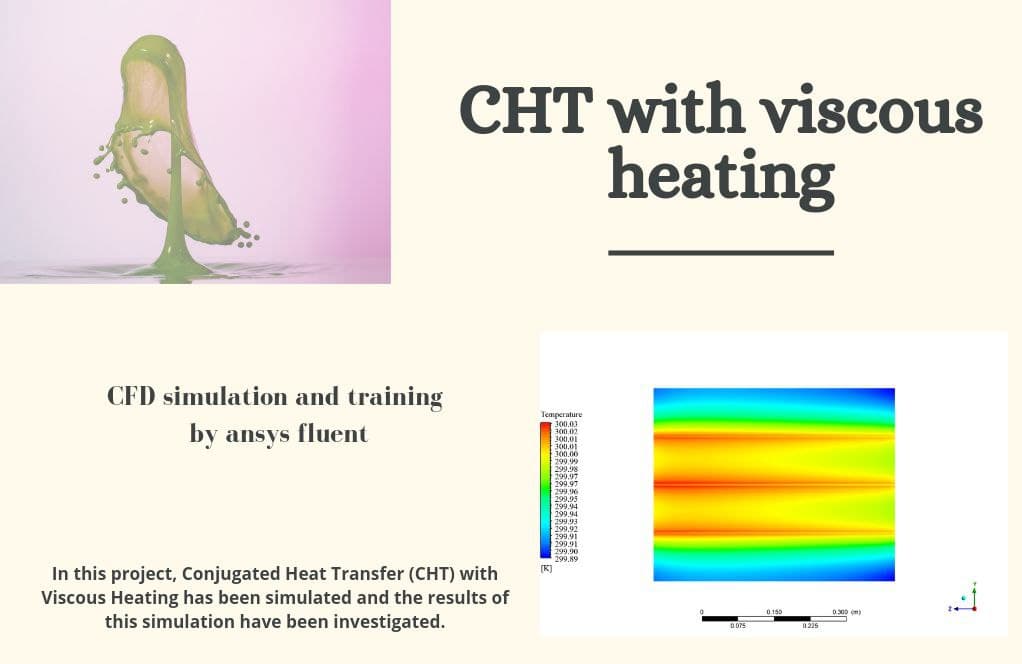
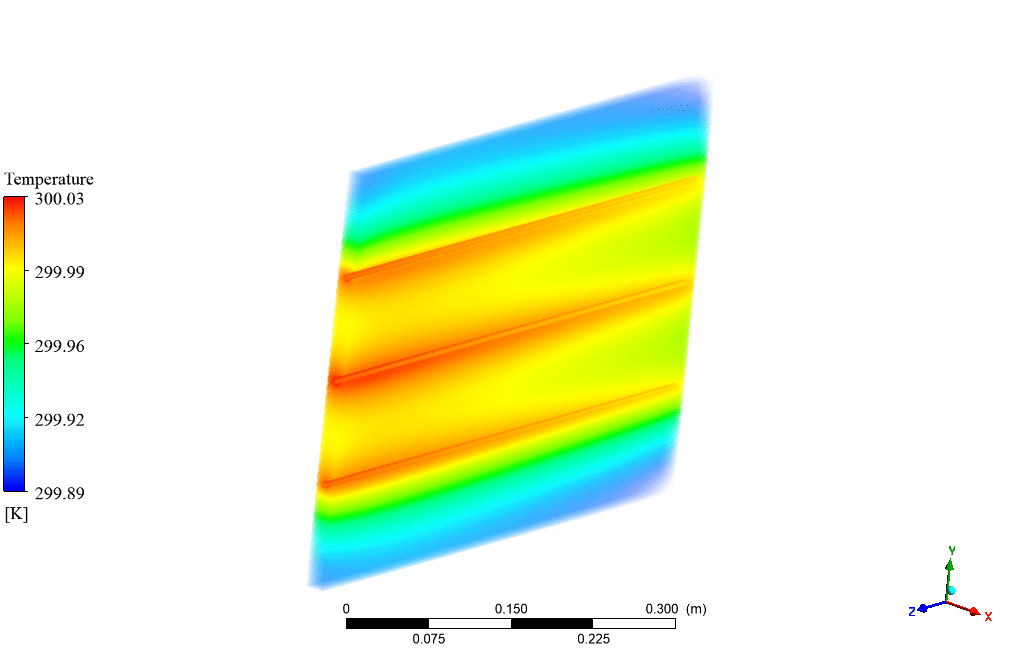
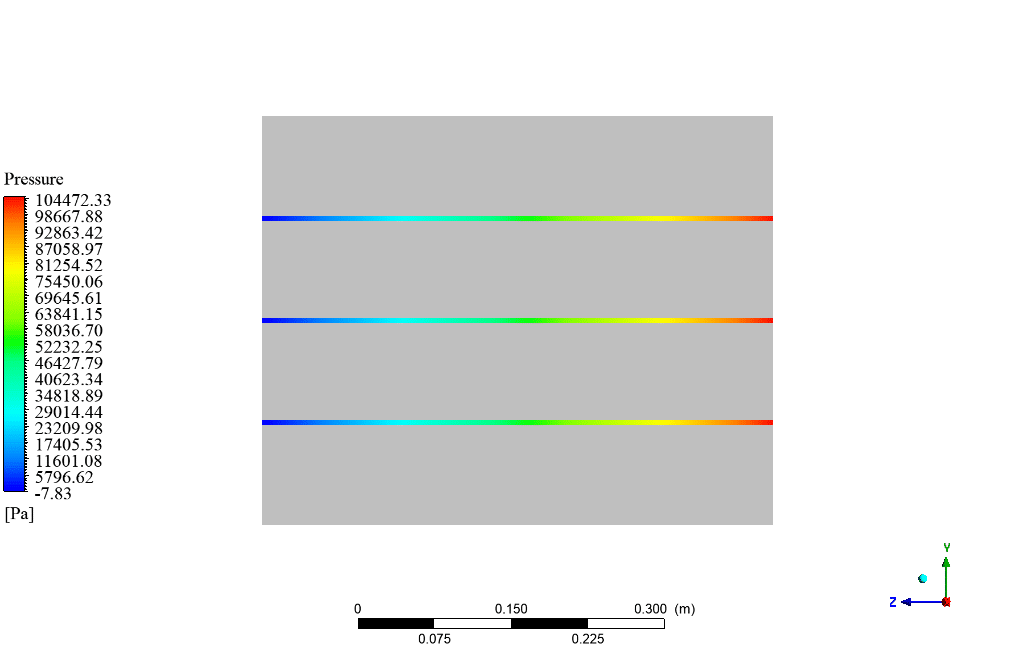
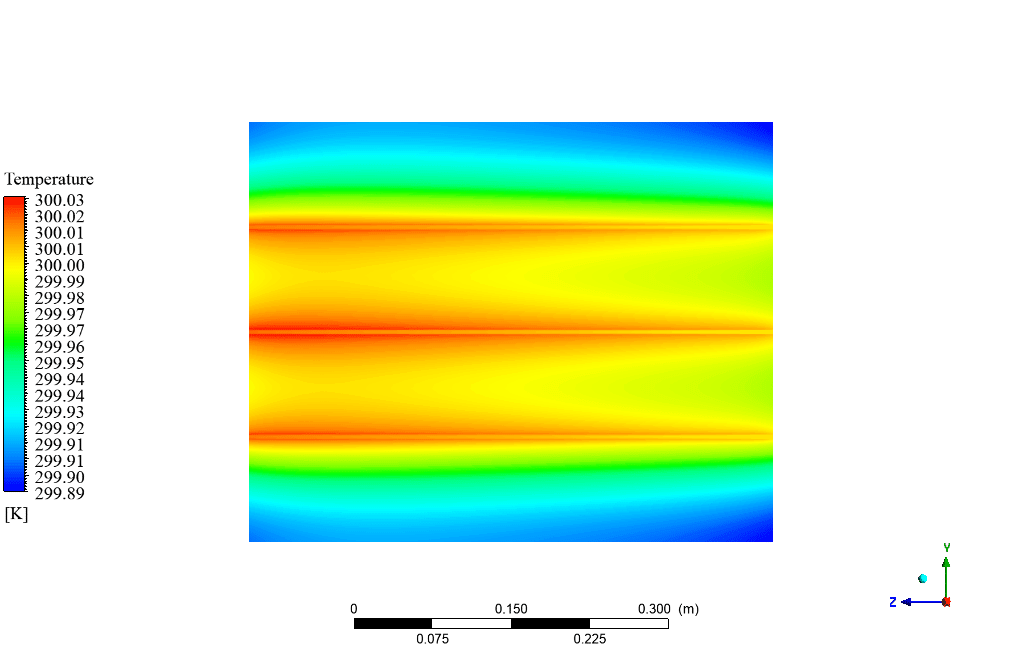
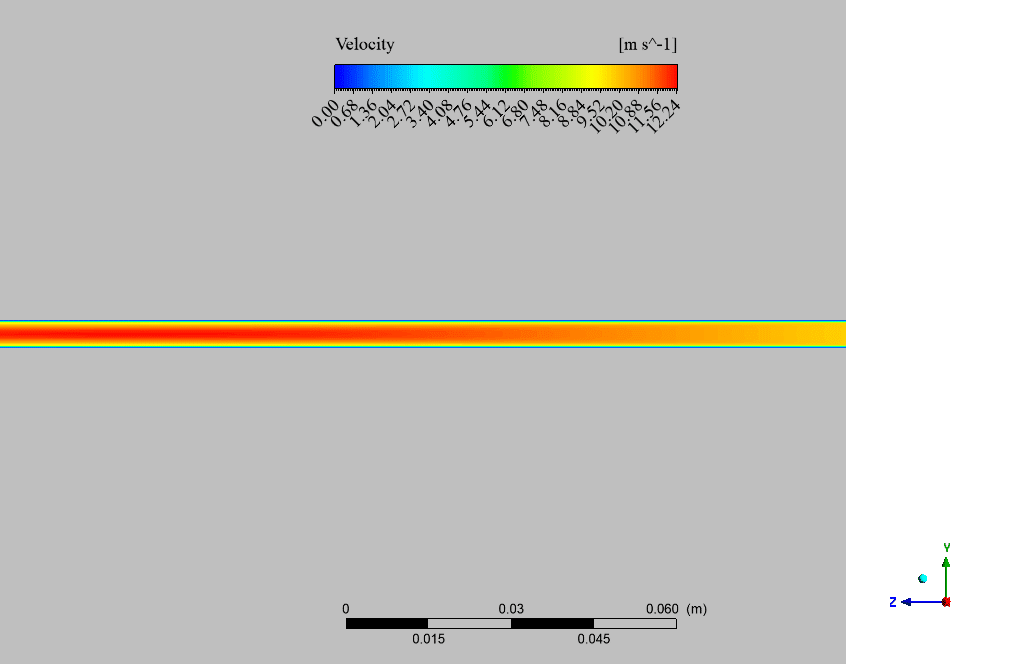
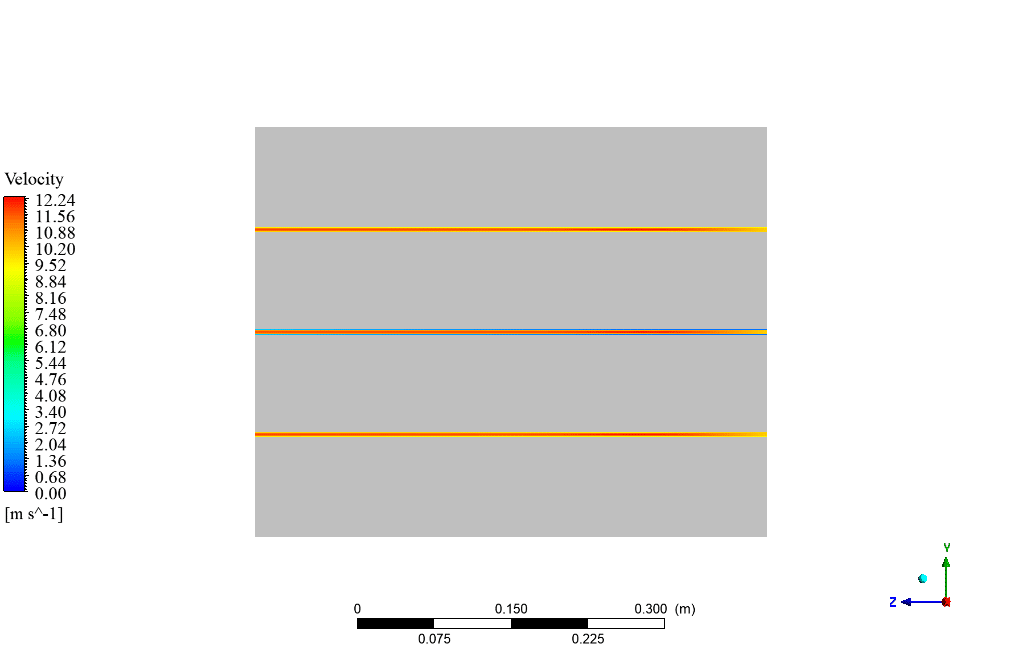

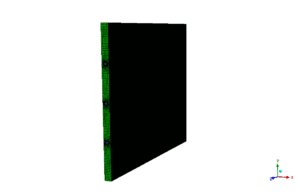
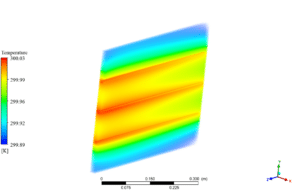
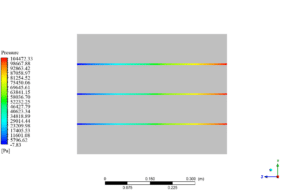
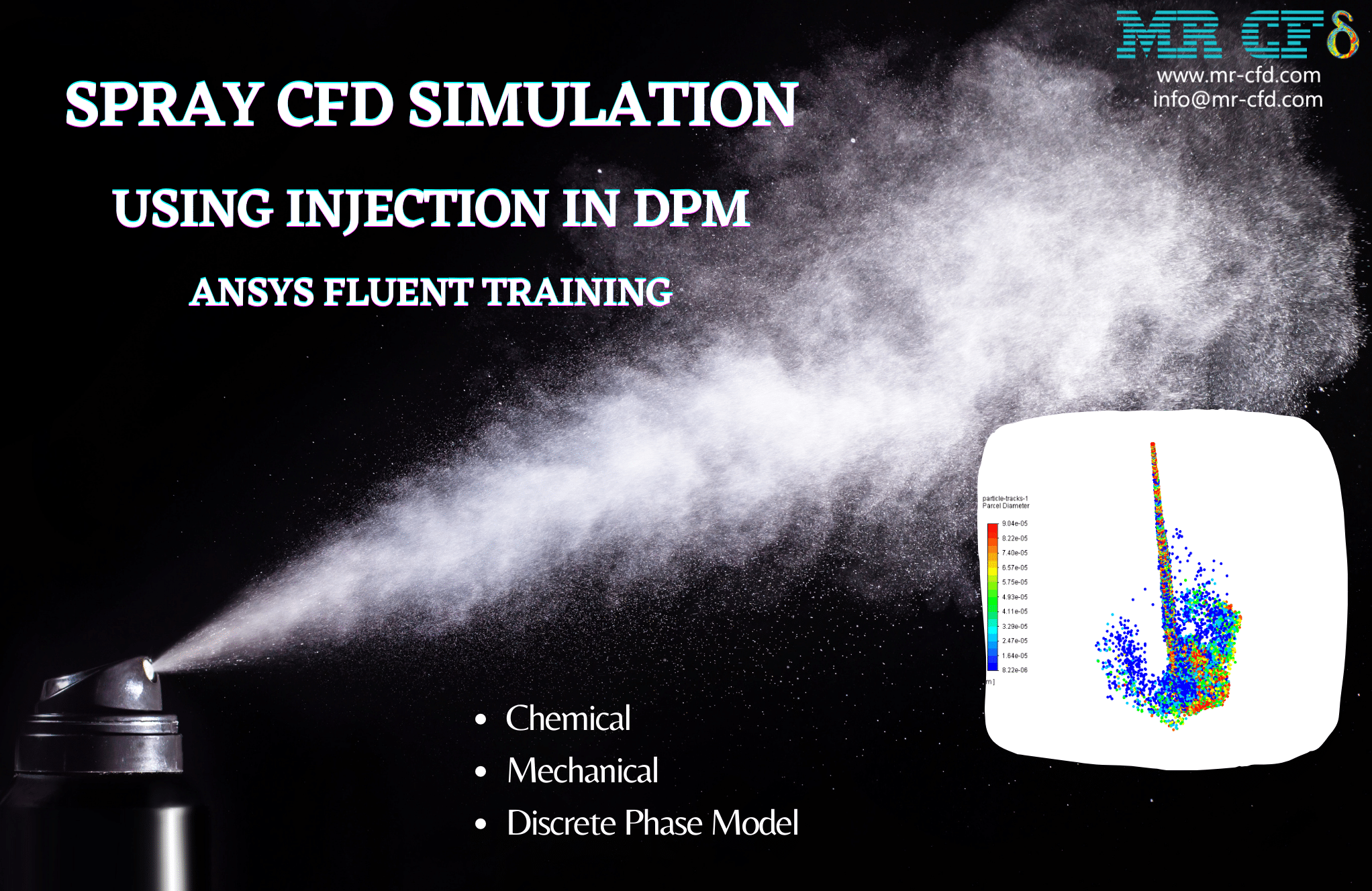

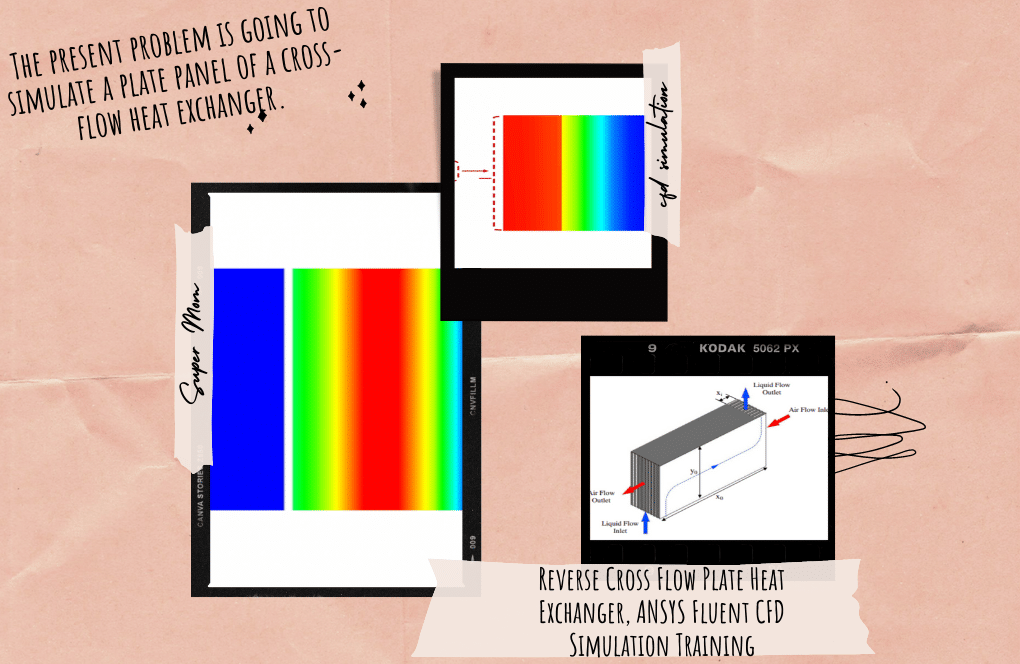
Florian Bahringer II –
Really impressed with the CHT simulation! Could you explain if the Coolant used affects the results significantly, and how?
MR CFD Support –
Yes, the choice of coolant has a significant impact on the results. Different coolants have varying thermal conductivity, density, viscosity, and specific heat capacities. These properties directly affect the rate of heat transfer within the channels and the overall effectiveness of cooling. For example, using a coolant with higher thermal conductivity can enhance the transfer of heat away from the solid domain.
Angelo Friesen –
This project looks incredibly in-depth. Can you tell me if the results were also compared with theoretical or experimental data to verify the accuracy of the CFD simulation?
MR CFD Support –
I’m glad you found the project description comprehensive. For this particular product description, we do not have direct information on comparisons with theoretical or experimental data for verification purposes. However, this is a crucial step in CFD analysis. MR CFD typically uses rigorous validation methods to ensure reliability in their simulation results, including benchmarking against available experimental and theoretical studies where applicable.
Oma Bartell –
This CHT with viscous heating simulation tutorial seems incredibly thorough. Your illustrations to show energy flow were particularly helpful in understanding the concepts.
MR CFD Support –
Thank you for appreciating our CHT with viscous heating simulation tutorial. We’re delighted to hear that the illustrations provided a clear understanding of the energy flow. If you need any further assistance with our products or have more questions about complex simulations, feel free to reach out!
Carmela Reichel PhD –
I was impressed with the level of detail in the Conjugated Heat Transfer with Viscous Heating simulation. The comprehensive approach of including viscous heating in the energy equation and using SST K-Omega to handle turbulence is commendable. Moreover, using aluminum as the solid domain for its conductive properties led to clear visualization of heat conduction. The mesh size was perfect, ensuring accurate simulation without compromising computational costs.
MR CFD Support –
Thank you for taking the time to review our Conjugated Heat Transfer with Viscous Heating simulation product. We’re thrilled to hear that the details met your expectations and that the simulation provided clear visualizations. It is our goal to combine accuracy with computational efficiency effectively. We appreciate your feedback and are glad that you found value in the product’s comprehensiveness.
Prof. Myrl Pacocha –
Your CHT project description was incredibly comprehensive. Thank you for detailing everything from the boundary conditions to the initialization methods. The included insights into viscous heating effects and the careful consideration given to enable that in ANSYS Fluent was especially informative. The assumed settings and the clear explanations of the meshing approach provide a good understanding of your methodology. Looking forward to seeing similar quality in future simulation projects as well.
MR CFD Support –
Thank you so much for your kind words and positive feedback! It is fantastic to hear that our detailed project description and methodology are so well-received and helpful to you. We always strive to provide clear and comprehensive information to support your learning experience, and we look forward to bringing you more high-quality simulation content in the future. If you have any further questions or need more information, please do not hesitate to reach out.
Kyle Halvorson –
This CFD simulation helped me understand the effect of viscous heating on the temperature distribution in CHT applications. The high velocity and small cross-section in the channels made the heat generation from viscous dissipation quite clear in the results. It was fascinating to see how energy was transferred through the aluminum body. The detailed setup including gravity neglection due to high flow velocities was an insightful touch. Awesome explanation and steps!
MR CFD Support –
Thank you for your review! We are delighted to hear that the CHT with Viscous Heating simulation was informative and useful for you. We always strive to provide detailed and clear explanations with our learning products. If you have any more insights or need further understanding, feel free to reach out. We appreciate the positive feedback!